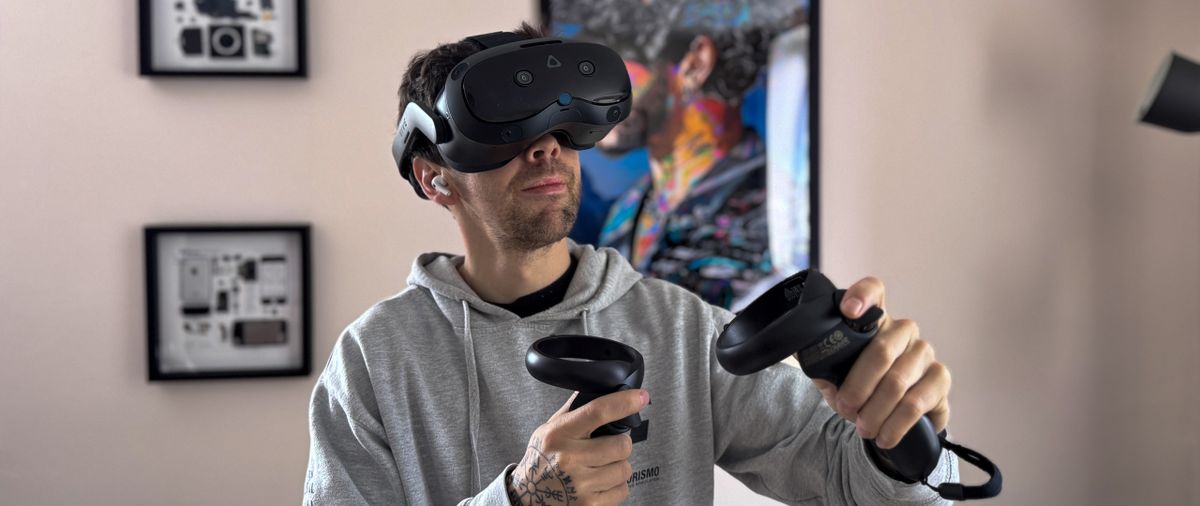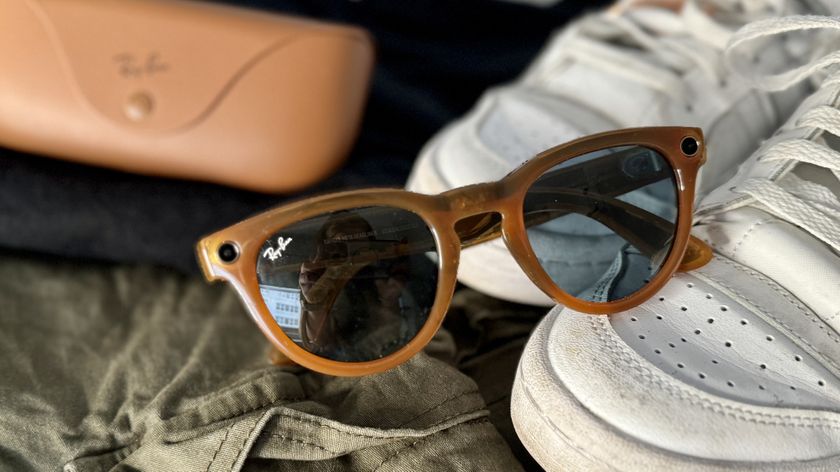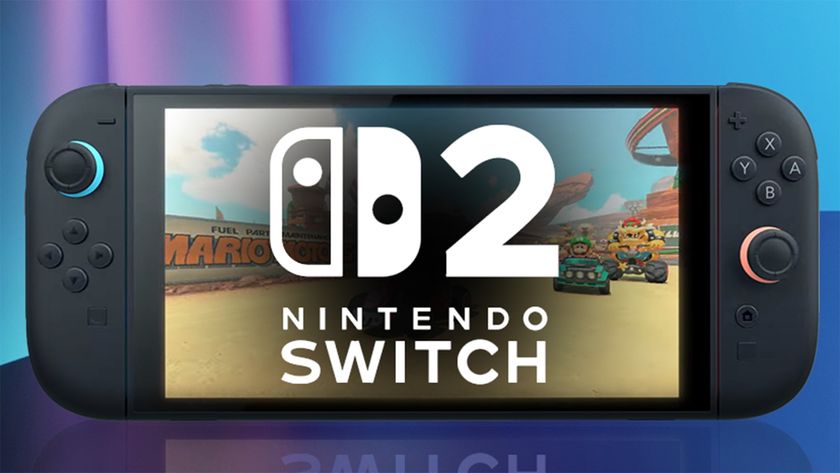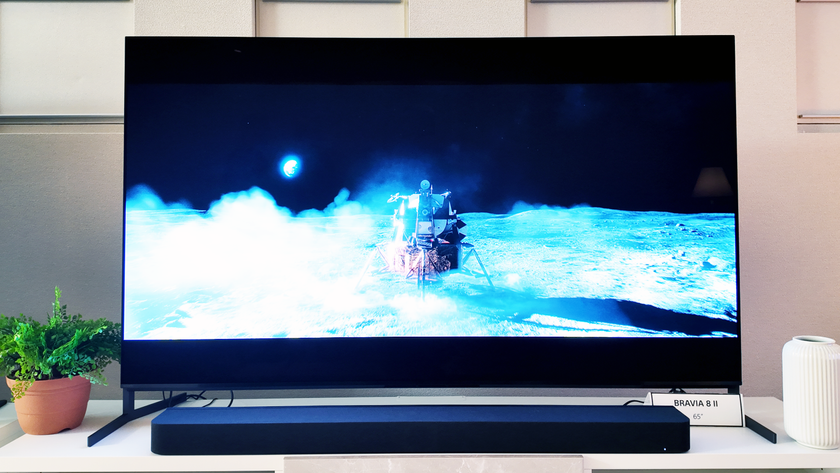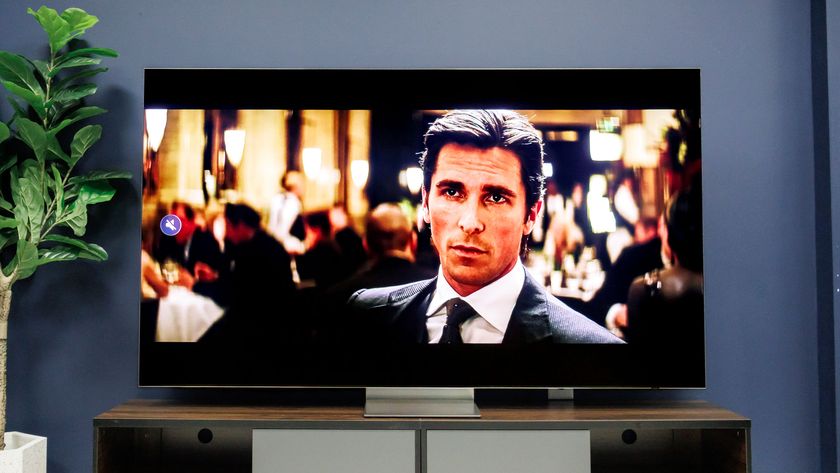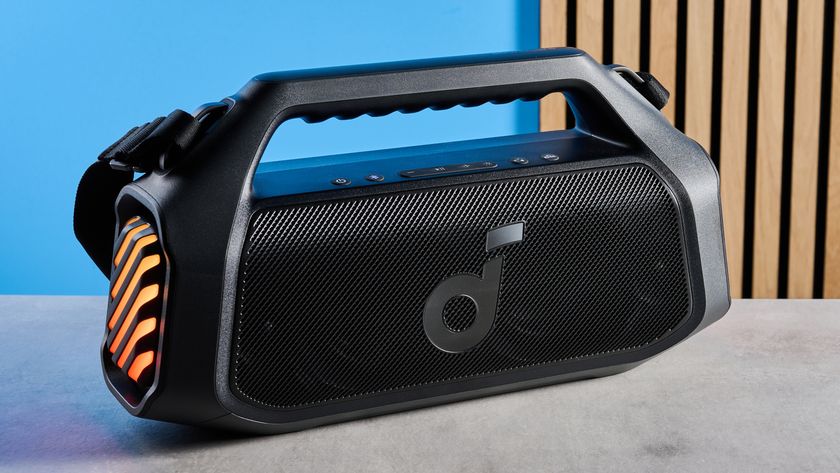Tom's Guide Verdict
For the intent purpose of PCVR gaming, the HTC Vive Focus Vision is a pretty solid headset — all the onboard tracking is rapid without any discernible latency, the wearability makes this comfortable for hours on end and the picture quality is mighty. But with the same chip you’d find in the Quest 2 and fresnel lenses for $999, this is tough to recommend to anyone outside of enthusiasts and professionals.
Pros
- +
Crispy, colorful picture
- +
Snug, comfortable design you can wear for hours
- +
Hot-swappable battery
- +
Impressive tracking across the board
Cons
- -
Outdated internal power
- -
Fresnel lenses
- -
Expensive for what you get
Why you can trust Tom's Guide
I really wanted to love the HTC Vive Focus Vision — everything was going so well in my first few tests with Half-Life: Alyx and VR sim racing. But after a few weeks with the headset, the relationship got a little complicated. Let me explain.
You see, in the first few play sessions, I felt that what I’d heard about this headset from my friends in this industry may have been a bit harsh. The build quality is great with a lovely, even weight distribution to feel great on your head for hours and hours — which makes the hot swappable batteries even more critical and impressive here.
Pair that with 5K display tech, stellar eye tracking with minimal latency, great tracking all-round and an ergonomic set of controllers, and you’ve got a good headset for gaming. But this is where the story of the Vive Focus Vision starts to get a little murky.
When you see a standalone headset for $999, you expect the standalone bit to shine. But there are some problems here that stop it from being one of the best VR headsets you can buy.
First, with fresnel lenses, you do see some distortion around the edges and chromatic aberration — a bit of a knockback when you see the half-price Meta Quest 3 get far better pancake lenses. The onboard Snapdragon XR2 chipset (the same one used in the far older Quest 2) is a disappointment, and as a standalone headset, there’s comparatively not that much to do when you look at what’s on offer from Meta.
And now, when it comes to PC VR gaming, we have a new challenger in the PSVR 2, which just so happens to be the combo breaker of high-specced VR tech at an impressive price. It’s a busy market where you absolutely need to be the best to stand out — especially at a thousand bucks. While there are some standout features here, there are just one too many drawbacks to make this a great buy for anyone outside of the enthusiast who is dedicated to HTC.
HTC Vive Focus: Cheat Sheet
- What is it? This is an enthusiast-tier VR headset with the price tag to match.
- Who is it for? This is for the PCVR pros and enthusiasts who have tethered themselves to the HTC ecosystem.
- What does it cost? You can pick one up for $999. At the moment, the streaming kit for PCVR gaming is included in a special offer. But outside of special offer times, you’ll have to spend an additional $149 to get it.
- What do we like? The build quality is excellent, ensuring comfortable wear all day long, while the hot-swappable battery provides the convenience to do so, and the 5K picture quality is super sharp to ensure that. Add in speedy eye and hand tracking with ergonomic controllers and you’ve got a solid headset.
- What don’t we like? Fresnel lenses are unfortunate. The use of a several-year-old chipset is problematic, and with limited software, this is not as “standalone” as it may seem.
HTC Vive Focus Vision: Specs
| Weight | 1.7 pounds |
| Display | 2448 x 2448 pixels per eye (5k resolution) LCD panels with 120-degree field of view — fresnel lenses |
| Audio | 3.5mm headphone jack, stereo speakers with directional design |
| Processor | Qualcomm Snapdragon XR2 |
| Memory and storage | 12GB LPDDR5 RAM / 128GB storage (expandable to 2TB with microSD) |
| Tracking sensors | 2x tracking cameras, 2x eye-tracking cameras, 2x full-color passthrough cameras, G sensor, Proximity sensor, Depth sensor, Gyroscope, Infrared floodlight |
| Battery | Hot-swappable batteries with up to 2 hours battery life |
HTC Vive Focus Vision: The ups
Provided you use it in a particular way, you can get a great experience out of the HTC Vive Focus Vision.
Super sharp 5K resolution
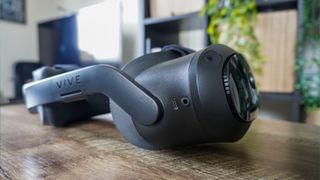
If you’ve got the right kind of gaming PC with the raw horsepower to drive super high-resolution visuals, that 5K LCD display with a 120-degree field of view can look glorious.
Whether it’s dipping into the sim racing experience of Assetto Corsa Competizione, having a laugh in Keep Talking and Nobody Explodes, getting lost in the trippy imagery of Tetris Effect or shooting your way through Half-Life: Alyx, the sharpness and vivid color of form the HTC Vive Focus Vision's picture cannot be understated.
Not only that, but neither can that field of view — the widest I’ve ever tested and something I didn’t really think I’d appreciate as much as I did here. Seeing all the crispy details in my peripheral view really adds to that immersion.
Plus, that resolution and 90Hz refresh rate (though 120Hz would’ve been a nice-to-have) does eliminate that screen door effect that became prominent in headsets from this company.
Comfortable design with hot-swappable battery
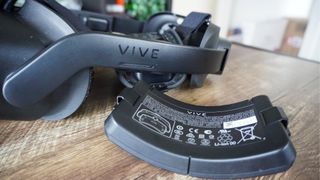
If there’s one thing HTC headsets have managed to do better than pretty much anyone else in the business, it’s wearability. And the Vive Focus Vision is no exception.
Starting with the build quality — the aesthetic is much more utilitarian in a way that it isn’t particularly stylized. Everything you see is where it is for a reason, and it all feels well put together without any creaking in the plastics when you adjust the headset on your face.
But most important here is that any VR headset is comfortable to wear, which the Vive Focus Vision absolutely is for hours on end. If you wanted to stay immersed in a game for hours on end, you won’t find any problems keeping this thing on, thanks to the balanced weight distribution between the tech up front and the battery pack round back.
And speaking of the battery, given it is hot swappable, staying in the game is easier than ever.
A peak PCVR system
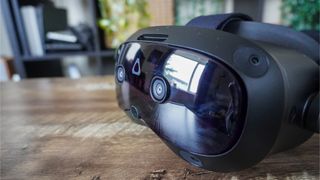
With near-latency free eye tracking, hand tracking, high resolution passthrough and two stellar controllers in terms of ergonomics, this is a great PCVR headset. It’s the byproduct of all the above coming together that makes it work.
On top of that, connectivity is simpler than you think with the additional streaming kit. Normally, it can be a mess of cables, but there is versatility here in how you can do so. Like the Meta Quest, there is a Streaming Cable you can use to plug directly into a VR-ready PC. And for that visually lossless connection for the pros, you can use the Wired Streaming Kit for DisplayPort connectivity.
There is also a wireless option here, but you can expect a downgrade in visual fidelity carrying that data over the air. It does mean you could whip out the Roto VR chair, though, and I did have a lot of fun spinning on this throne playing Half-Life!
HTC Vive Focus Vision: The downs
So it’s good for a PCVR headset, but once you start to peel back the layers elsewhere, you start to notice some frustrations.
Not-so standalone after all

This is always going to be a problem with any headset that doesn’t have the word Meta in its name. Yes, this headset is technically a standalone one — a hybrid that can switch quick on the fly between PCVR and its own Android-based OS. But given the very limited selection of games you’ll find on Viveport (with many being rather old), it doesn’t really feel standalone.
HTC’s done the work on its own frontend, as the OS itself is easy to navigate and simple to establish your boundaries with room-scanning (plus shoutout to the rather nice full-color passthrough). But if there isn’t really anything to do, I found myself spending the vast majority of the time with this headset tethered to my PC.
Who knows? Maybe Android XR will change this in the future. But I can only go off what I have right now.
Outdated chipset
Why this doesn’t have the Snapdragon XR2+ Gen 2 packed into it is beyond me. Instead, you’ve got the same chip that you find in the Meta Quest 2 — the Snapdragon XR2 — and in the standalone VR experience, you can start to feel the system stress under more than your casual gaming or productivity pressure.
There is multitasking capability with the 12GB of onboard RAM, but I’m not sure whether it’s a bottleneck of the chipset to that RAM or something else (maybe the graphics performance?) — something sticks in the claw of this headset when you really throw something a little more intense at it. Even more frustrating is that you’ve just spent $999 on a headset with this, and speaking of frustrations…
Fresnel lenses in a $1,000 headset? Come on!
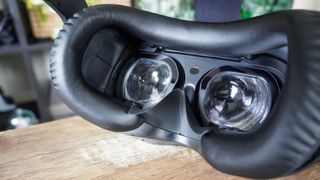
I think we’re all in agreement that pancake lenses are absolutely the best way to go in VR right now — you don’t get the chromatic aberration or light blooms caused by the circles imprinted on the glass. And Meta knew this with the Quest 3, but had to opt for fresnel on the Quest 3S to cut cost.
So why am I seeing fresnel lenses on a headset of this price? The sharp picture does fight off some of the edge blurring, but the blooming is seemingly unavoidable in any games that play a lot with the contrast ratio.
Out of the choices made for the Vive Focus Vision, this seems like the most baffling one.
HTC Vive Focus Vision: Verdict

And that’s the story of the HTC Vive Focus Vision. In many ways, this is one of the best PCVR headsets you can buy — packing an impressively crispy, colorful and smooth 5K screen, impressive tracking of eyes and hands, and an ergonomic design with hot-swappable batteries to keep you playing all day.
But for a thousand bucks, there’s just one too many drawbacks that can be frustrating for the price you pay. The limited app library and reliance on the older Snapdragon chipset means this isn’t so great as a standalone experience. And probably most criminal — fresnel lenses on a $1,000 headset is just unacceptable.
So when you think of this as a not-so standalone headset that requires a PC to take advantage of all it offers, you’re then in a world of other options like the more cost-efficient PSVR 2 with all its OLED glory at a fraction of the price. By that point, this becomes hard to recommend to anyone outside of the PCVR elite.

Jason brings a decade of tech and gaming journalism experience to his role as a Managing Editor of Computing at Tom's Guide. He has previously written for Laptop Mag, Tom's Hardware, Kotaku, Stuff and BBC Science Focus. In his spare time, you'll find Jason looking for good dogs to pet or thinking about eating pizza if he isn't already.
-
BassBoostedDuck hi there, jason, persoanly the choise of lense is a personal choise, each type has its draw backs, yes over all pancake lenses are better for the avrage gamer, however for the hardcore vr users out there like 90% of the vr social scene many of us dont care about pancake lenses due to their fov and edge blurring issues.Reply
as for the facts about the hardware on the headset you are incorrect on some parts, the head set has 4 tracking cam, 2 duel use fron colour passthrough used for tracking and colour passthrough, so in reality there are 6 tracking cams, not 2. as for the battery life on the headset, it all depends on what settings you have the headset on. depending if you are useing a higher refresh rate or not also makes a big diffrance on battery life.
taking into account that im not going to list off everything that you have said wrong here, i would like to see a revision to this post correcting your misstakes and your harsh words towards this headset not taking into account real world use cases and what demographic it would be best suited to. e.g vr social gamers, vr developers, artists, or just light vr gamers.
from a facts point of view after not only reviewing the headset accross multiple sources but also being in the process of getting a this headset myself, i cannot fathom how you came to this choise when 25% of your data is incorrect and inconsistant with any other review / spec sheet out there.
please for the sake of your readers and fans, revise this artical and get your facts right.
